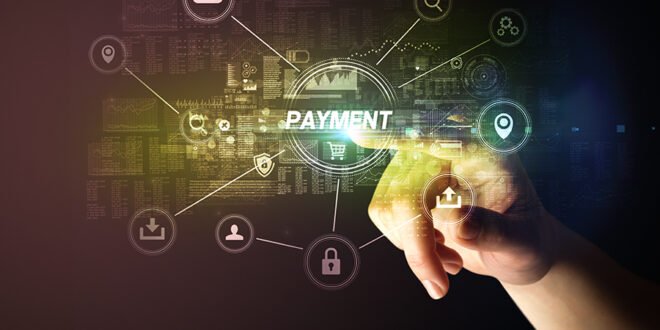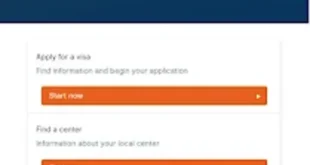The Future of Fintech and Payments: A Global Perspective
Over the years, I have observed the dynamic evolution of financial technology, and today, I find myself both amazed and curious about what lies ahead. From bustling cities in the United States to rural towns in Africa, the fintech and payments landscape is undergoing a rapid transformation. In this article, I’ll explore where fintech and payments are heading in the next three to five years, a future that promises to be more instant, inclusive, decentralized, and user-centric than ever before.
The Rise of Instant Payments
In the developed world, payment infrastructure is catching up to the demand for immediacy. In the United States, the Federal Reserve’s new FedNow Service went live in July 2023, enabling banks to settle payments within seconds, 24/7. This marks a critical shift from the era of waiting days for transfers.
Meanwhile, India’s Unified Payments Interface (UPI) has already leapt ahead, with over 300 million users. UPI handled nearly half of all global instant payments in 2022. In 2023 alone, it processed about $2.2tn in transactions, showcasing the appetite for fast, digital payments. Such real-time payment networks are expanding domestically and starting to interlink across borders. For example, UPI is extending its reach outside India (now accepted in about a dozen countries), hinting at a future where sending money internationally could become as seamless as a local transfer.
In the next three to five years, I expect instant payment systems to become standard in most major economies, gradually knitting together into a global real-time payments web that reduces friction for businesses and consumers alike.
Mobile Money and Financial Inclusion
One of the most inspiring fintech stories comes from emerging markets, where mobile technology bridges gaps that banks never could. In places across Africa, mobile money services allow millions to store, send, and receive money with a basic phone. Kenya’s M-Pesa pioneered this model over a decade ago, and today such services have become a backbone of African economies.
By 2024, Africa was processing about 81.8 billion mobile money transactions yearly – roughly 74 per cent of all transactions worldwide – amounting to over $1.1tn. The continent now hosts over 1.1 billion registered mobile money accounts, over half the global total. These numbers are more than statistics; they represent farmers receiving payments instantly, small merchants accessing a broader customer base, and families sending remittances efficiently. Mobile money has given financial access to people who have never had a bank account, helping drive economic activity at the grassroots. I foresee continued growth in mobile wallets and agent-based services across emerging markets. As smartphones become cheaper and connectivity improves, we’ll likely see more advanced services (like micro-loans, insurance, and savings products) riding on these mobile money rails, further narrowing the financial inclusion gap over the next few years.
Decentralization and New Infrastructure Models
Another revolutionary theme shaping the future is decentralization. Over the past several years, we’ve seen the rise of decentralized finance platforms that let individuals lend, borrow, or transfer value on blockchain networks without traditional intermediaries. This trend extends beyond finance into real-world infrastructure via Decentralized Physical Infrastructure Networks (DePIN). The idea behind DePIN is to use token incentives and community participation to build physical services that were once the domain of large corporations.
We already have early examples proving this model: for instance, Hivemapper and Helium are projects where users contribute resources and get rewarded. Hivemapper’s global community has mapped over 330 million kilometers of roads using dashboard cameras, surpassing some traditional mapping providers. Helium’s users have deployed over 1 million community-run wireless hotspots to create a decentralized IoT network. These models hint at a future where users collectively own and operate pieces of the infrastructure – networks, storage, or even energy – and earn value for doing so.
In the next three to five years, I expect to see more experimentation in this space. Decentralized networks (including blockchain-based payment networks and stablecoins) could start integrating with mainstream finance, especially for cross-border transactions and remittances. However, challenges around regulation, security, and sustainability of token economics must be addressed. My analysis is that decentralization will complement rather than completely replace traditional systems, creating hybrid models where community-driven networks work alongside banks and fintech firms to improve coverage, reduce costs, and foster innovation.
Central Bank Digital Currencies (CBDCs)
Not all fintech innovation happens in startups or grassroots projects; central banks actively explore their digital currencies. Central Bank Digital Currencies (CBDCs) have moved from a theoretical concept to pilot programs worldwide. As of early 2025, about 134 countries – representing 98 per cent of global GDP – are in some stage of CBDC exploration, with 66 countries already developing or piloting digital currencies.
The motivations range from improving payment efficiency and financial inclusion to responding to the rise of cryptocurrencies. China is at the forefront with its digital yuan (e-CNY) pilot. By mid-2024, the e-CNY had processed around ¥7tn (nearly $1tn) worth of transactions in pilot regions, and usage continues to grow rapidly. Other nations are not far behind. In Nigeria, the eNaira was launched to extend financial services to the unbanked, and countries like Sweden, India, and Brazil are testing their own CBDC implementations.
In the coming three to five years, we will likely see a few full-scale CBDC launches. These could streamline domestic payments and even enable new forms of cross-border settlement if countries cooperate. That said, the rollout of CBDCs will be gradual and cautious – privacy, cybersecurity, and coexistence with cash and bank deposits are being carefully considered. If designed well, CBDCs could modernize payment infrastructure (for example, making government disbursements or tax payments more efficient) and work in tandem with private-sector payment innovations. The key will be ensuring that introducing digital fiat money doesn’t inadvertently exclude citizens or undermine trust in the financial system.
The User Experience Revolution
Amid all this technological change, one thing remains constant: the best experience wins. Whether it’s a consumer deciding between payment apps or a small business choosing a new banking service, usability and convenience are paramount. We’ve already seen how seamless experiences can drive adoption – think of how effortlessly one can pay for a ride share or tap a phone at a checkout.
Going forward, fintech providers are doubling down on making payments invisible and frictionless. The concept of embedded finance is gaining ground, where payments happen in-app or in the background of other services. This creates a smooth journey for users, who no longer have to jump through hoops to complete a transaction. A frictionless transaction isn’t just nice-to-have; it leads to higher customer satisfaction and loyalty.
Biometric authentication (like face or fingerprint ID) and tokenisation make payments secure and easy, eliminating the need to enter card details repeatedly. User experience is becoming a key competitive battleground – banks, fintech startups, and big tech companies invest in intuitive design, speed, and personalisation. From AI-driven chatbots that make financial advice more accessible to one-click international payments, the goal is to reduce complexity for the end user.
In my view, the winners in fintech will be those who manage the complex machinery under the hood and present a simple, human-centric interface. We’re heading toward a world where people might not even think about the “payments” they are making – the technology will fade into the background of everyday life.
A Converging Future
As I reflect on these trends – instant payments, inclusion through mobile money, decentralization, CBDCs, and the quest for a perfect user experience – it’s clear that a convergence of innovations across regions will shape the future of payments. What excites me is how much cross-pollination is happening.
Lessons from emerging markets (like how to scale financial services cheaply via mobile) inform developed markets. In contrast, advanced technologies from developed economies (like AI and blockchain) are being adapted to local needs elsewhere. I anticipate that in the next three–five years, the line between “developed” and “emerging” in fintech will blur: for example, a farmer in India might use a state-of-the-art digital wallet not unlike a trendy app in San Francisco, and a payment in the US might route through a blockchain network developed originally for unbanked communities.
We will also face challenges. Regulation will play a massive role in how far and fast some of these changes go – striking the right balance between innovation and consumer protection is an ongoing task for policymakers worldwide. Additionally, cybersecurity threats will persist and require vigilant countermeasures as more value flows through digital channels.
On the whole, I remain optimistic. The trajectory of fintech and payments is pointing toward greater efficiency, accessibility, and empowerment for users. Transactions that once took days or required physical cash are becoming instant and digital. More people are included in the financial system than ever before, and they have more choices in managing their money. If we continue to build on these trends, guided by thoughtful regulation and a focus on user needs, we could witness a more open, innovative, and inclusive era of payments. As someone who has watched this space evolve, I’m excited to be part of the journey – and I look forward to seeing how our financial lives improve as the next chapter of fintech unfolds.
 Info Malang Raya Its All About World News
Info Malang Raya Its All About World News




